I'm glad that people still like to see the insides of old stuff. Probably because it's much more interesting than a big green surface mount board we see today.
Tektronix 7613 storage oscilloscope mainframe
I got this mainframe off German ebay several years ago. It was advertised as defective, but when I got it there seemed to be nothing wrong with it. This scope is from around 1983. It is an analog storage scope meaning that it can retain the image on the screen untill you hit the erase button. There is also a variable persistance function that will slowly fade away the traces. This is a very nice scope for low frequency measurments, The bandwidth is 100MHz, has room for 3 plugins (2 vertical amps + 1 timebase).
Front panel of the scope
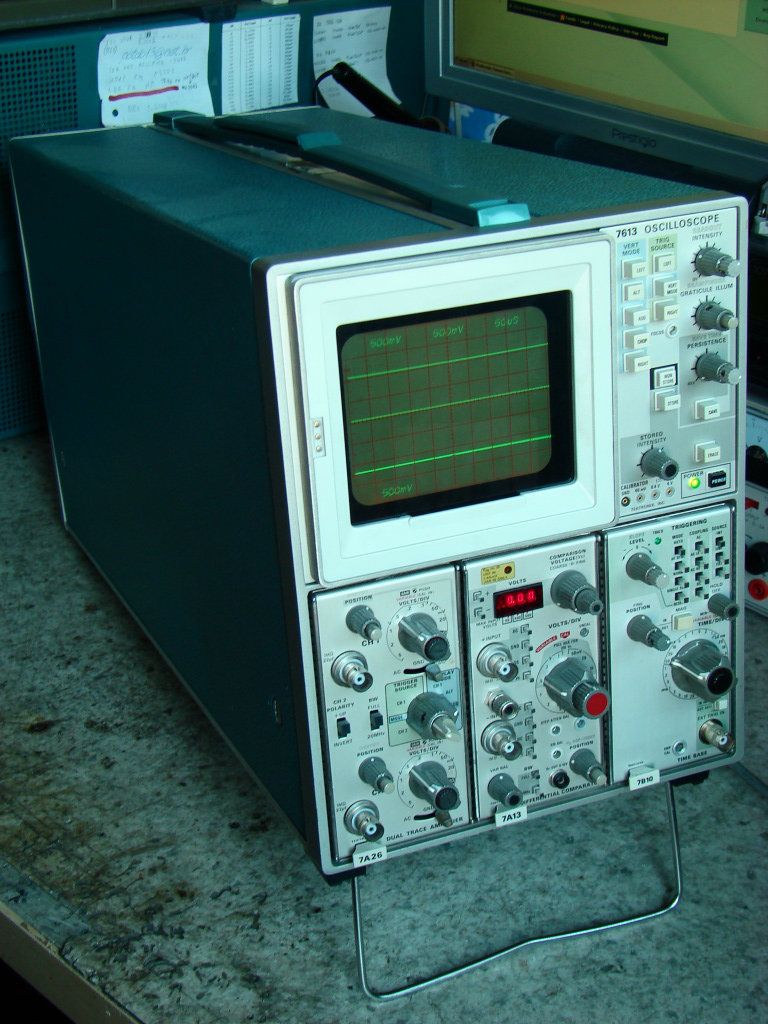
Typical display for the Tek 7000 series. Readouts display vertical sensitivity and sweep speed.
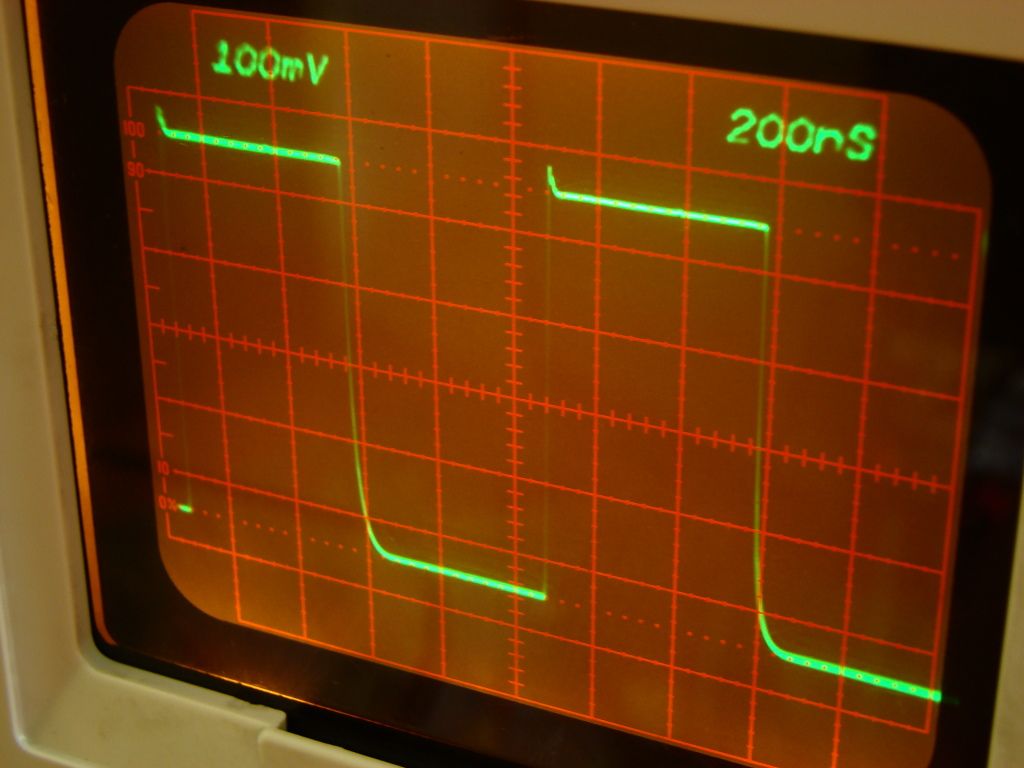
With the sides removed the blue CRT shield and deflection amplifiers can be seen.
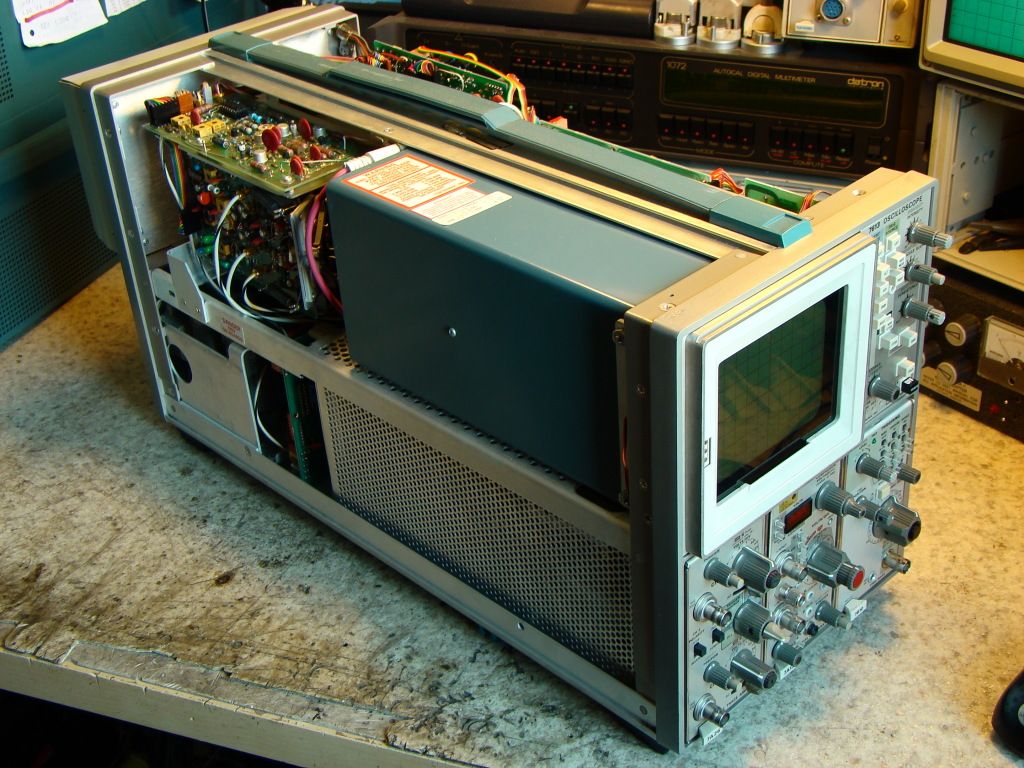
Vertical amplifier board. The differential signal comes to the amplifier trough a delay line which is wound around the CRT.
A lot of gain and compensation trimmers can be seen.
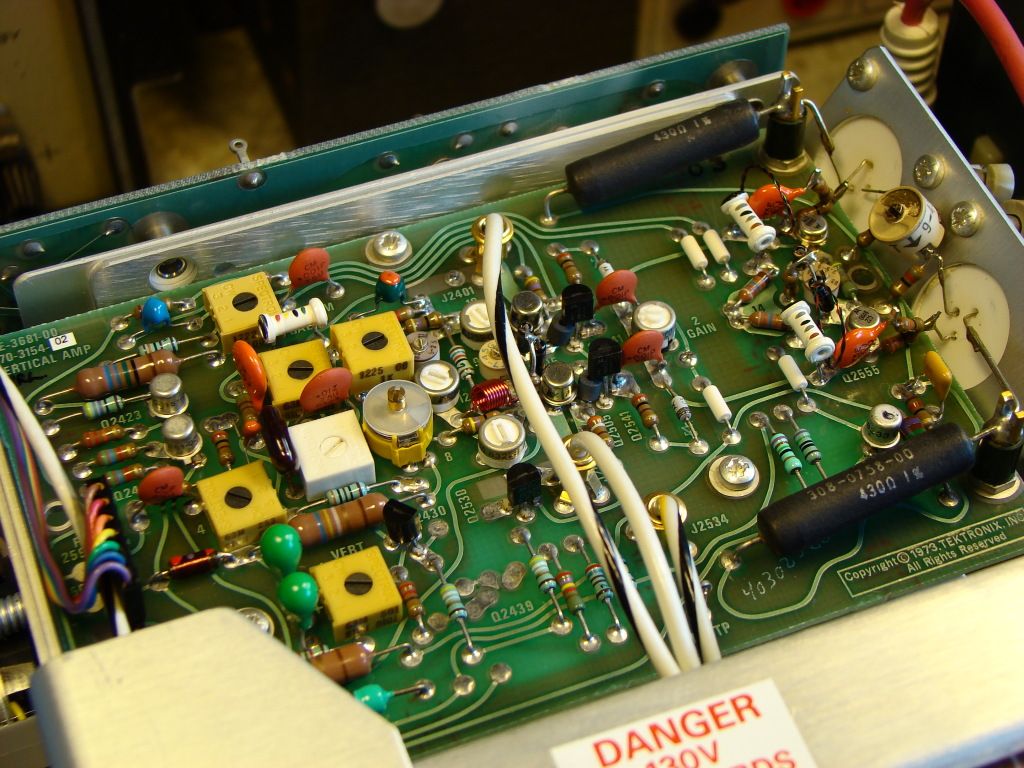
Closeup of the driver stage. It's really hard to get a picture that shows all the free standing components.
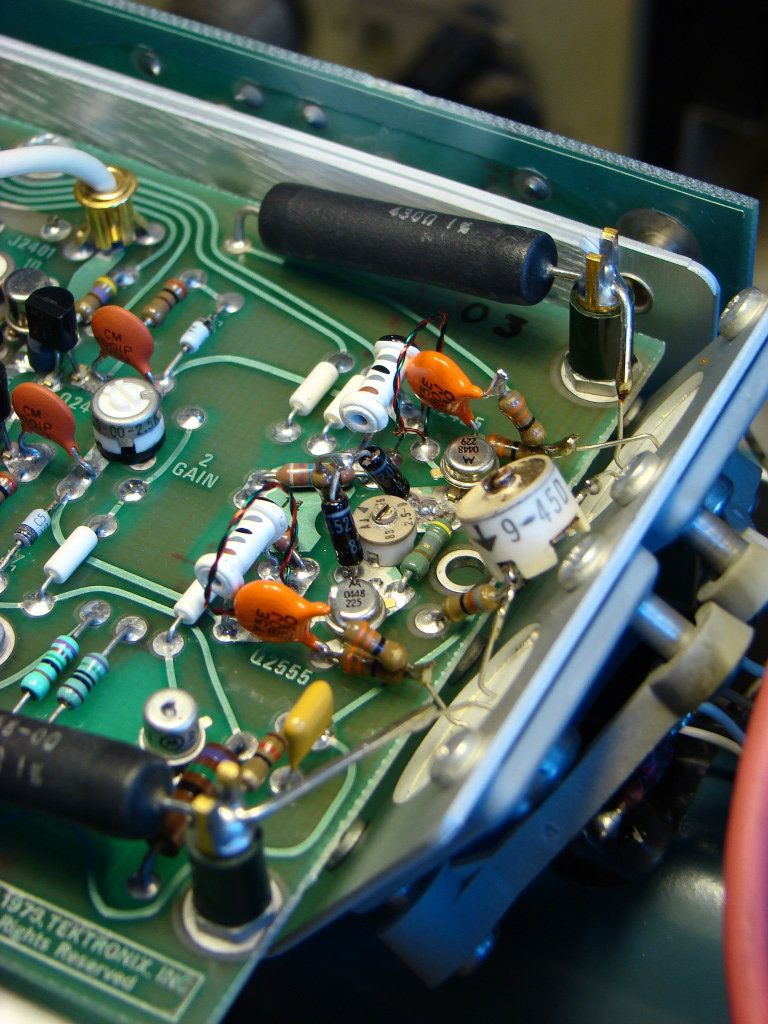
Vertical output transistors. These are connected directly to the vertical deflection plates of the CRT.
They are mounted on a ceramic substrate that dissipates the heat and reduces capacitive coupling which would decrease the bandwidth.
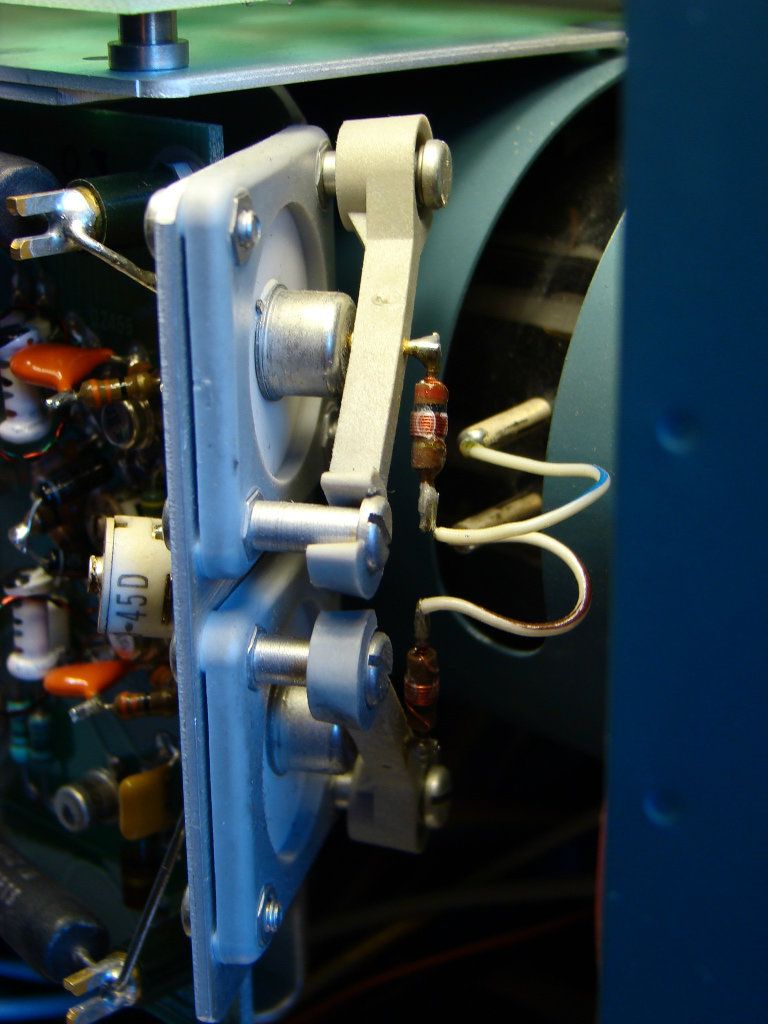
Horizontal deflection amplifier.
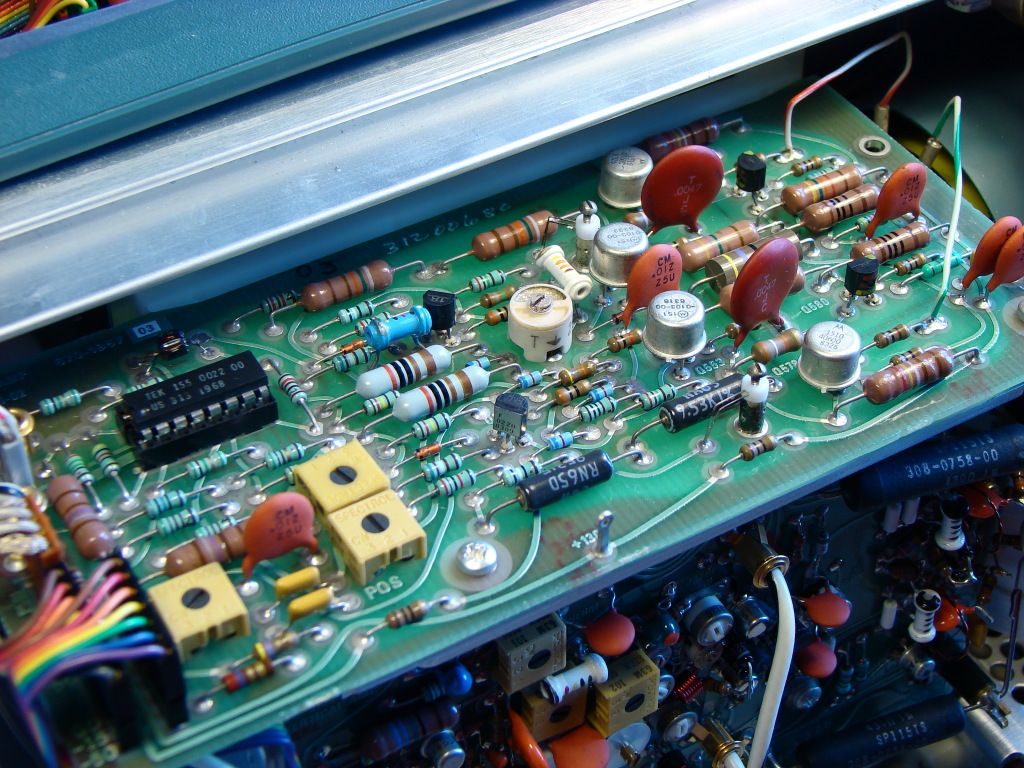
This is probably something that most analog oscilloscopes don't have. This is the storage board.
It controls the CRT target and storage grid and erase voltages.
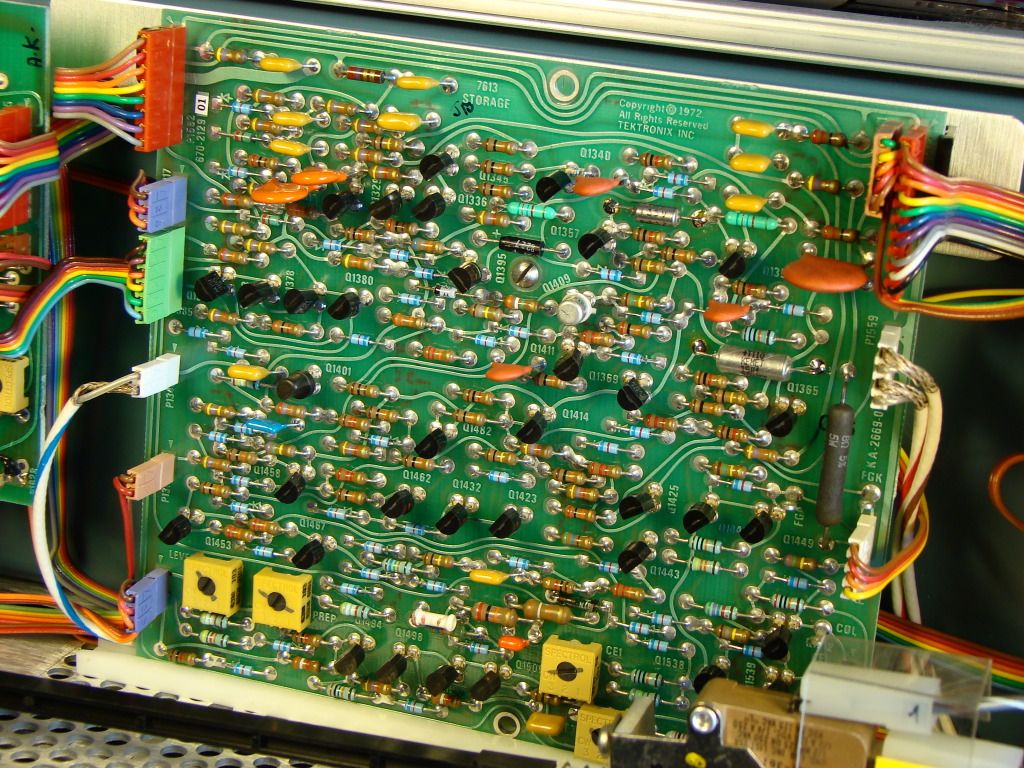
Front panel controls and calibrator board. Very high quality Bourns potentiometers were used.
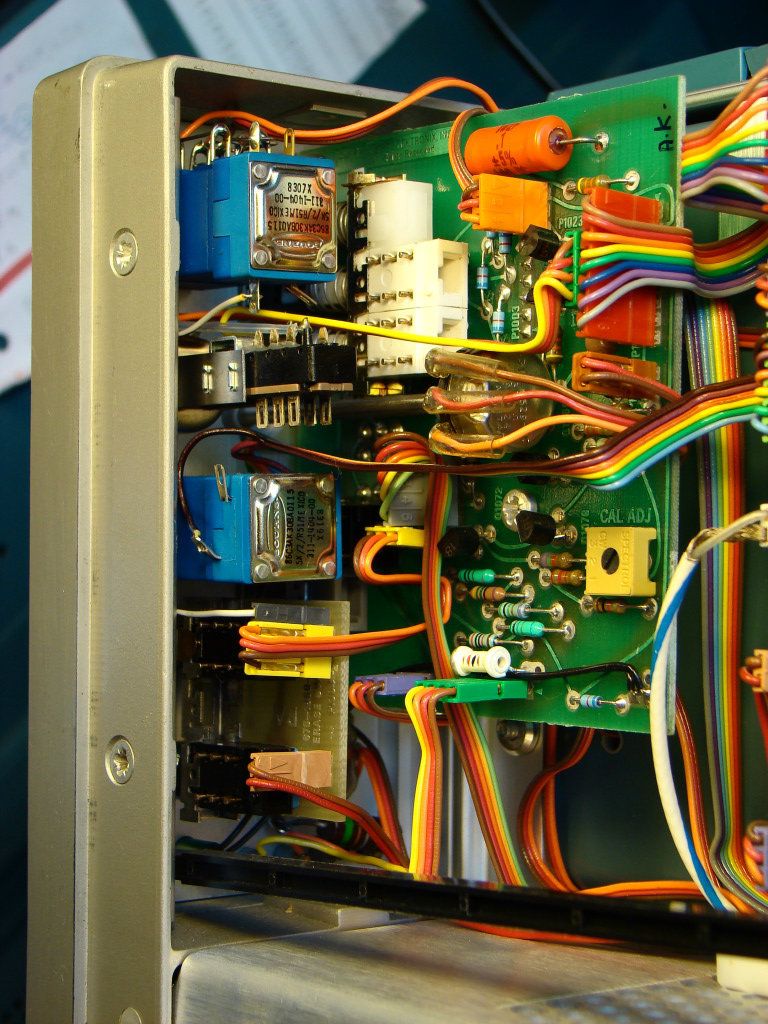
Now that's a real mains switch. None of that standby nonsense.
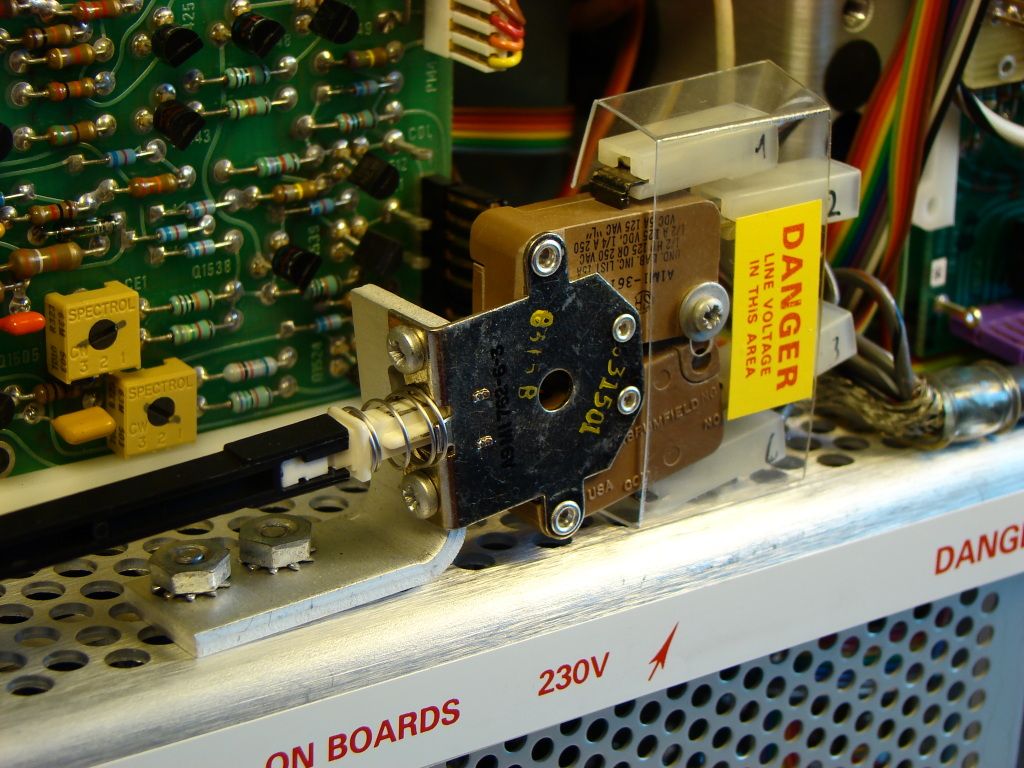
Readout board. This is proabably what made the 7000 series special (that and the vast range of interchangable) plugins.
This generates the characters for the various control settings. The small board on the left with the diodes is for protection.
The early versions didn't have it. Behind the readout board is the HV power supply for the CRT.
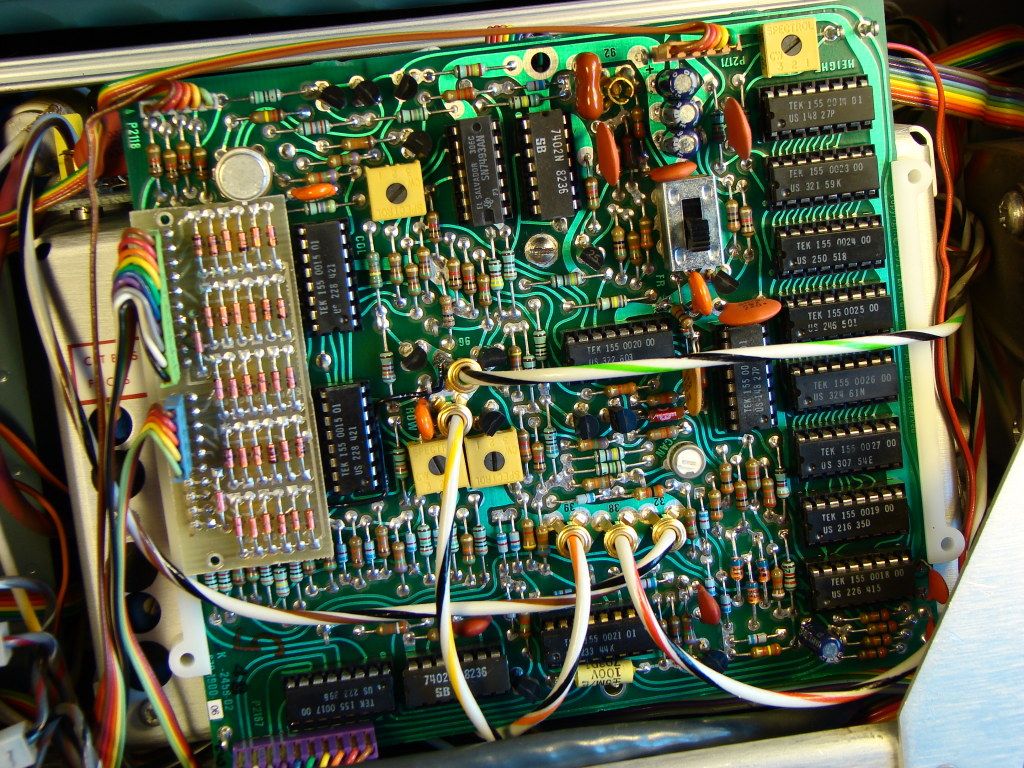
Low voltage regulator board. This supplies +5, +15, -15, +50, -50 and +130 volts to the entire mainframe and plugins.
The series pass transistors are mounted between an aluminium plate for heat dissipation.
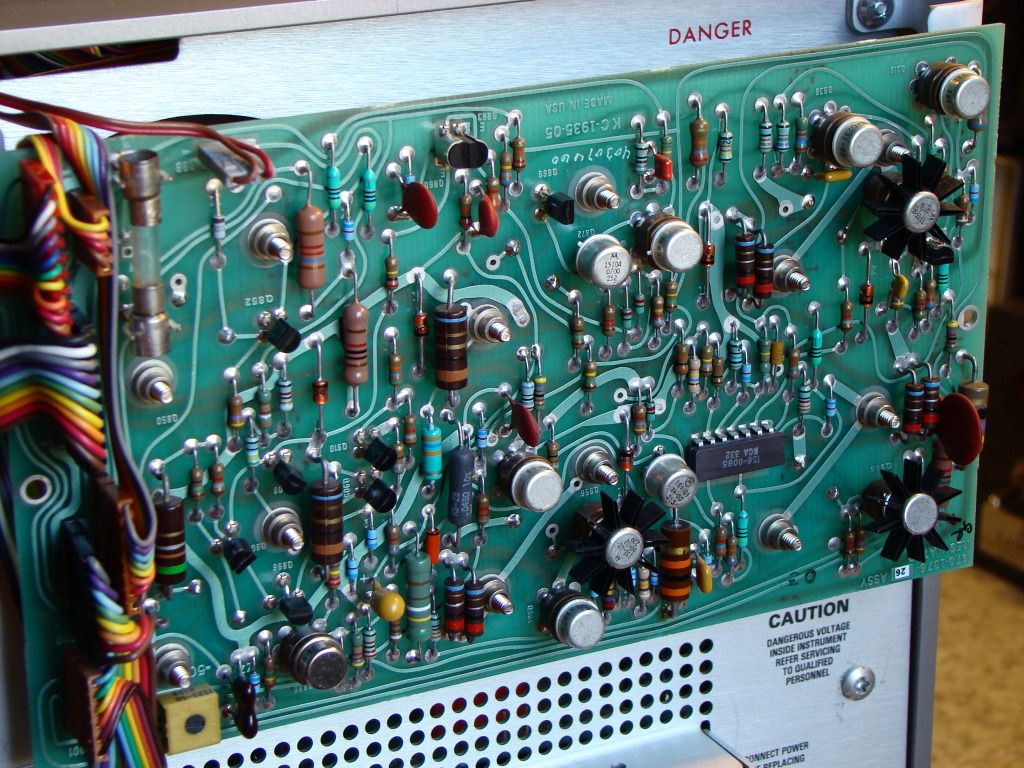
So it had to come to this. Looks like I can't stand the fact that I don't know how a CRT in a scope looks.
Remove a couple of screws and it comes out. Simple as that. Very nice construction.
For some reason it looks like they haven't painted the ceramic part of the CRT with the usuak Tektronix blue color, but rather left it bare.
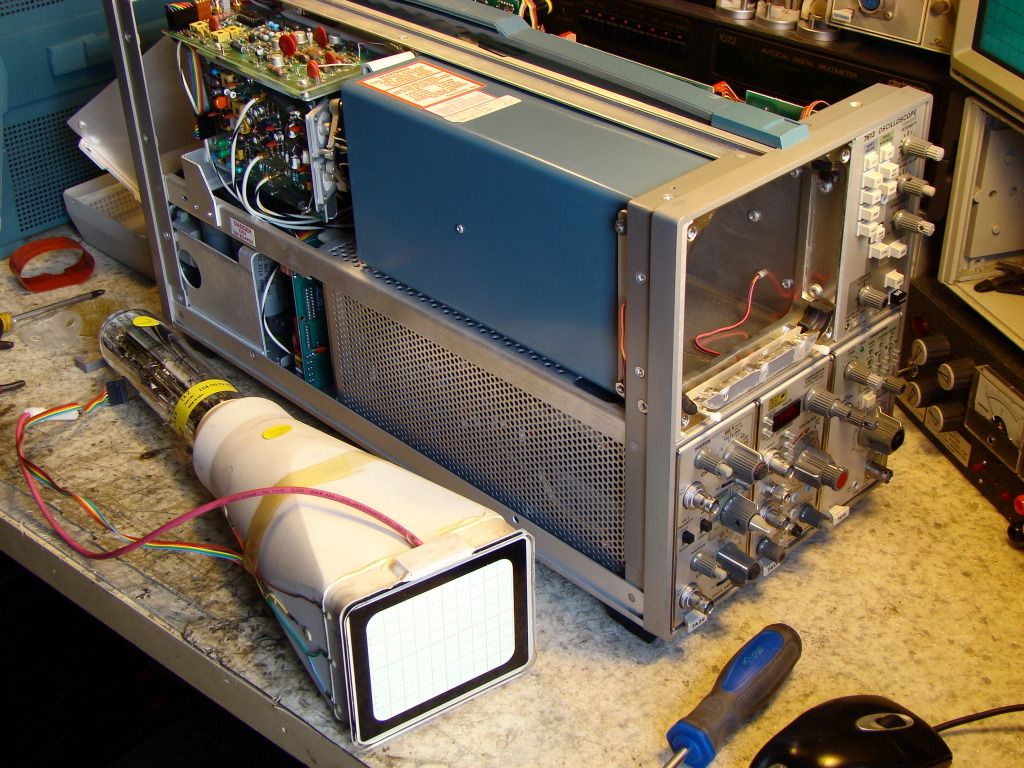
The electron gun and the segmented deflection plates can be seen in the neck of the CRT.
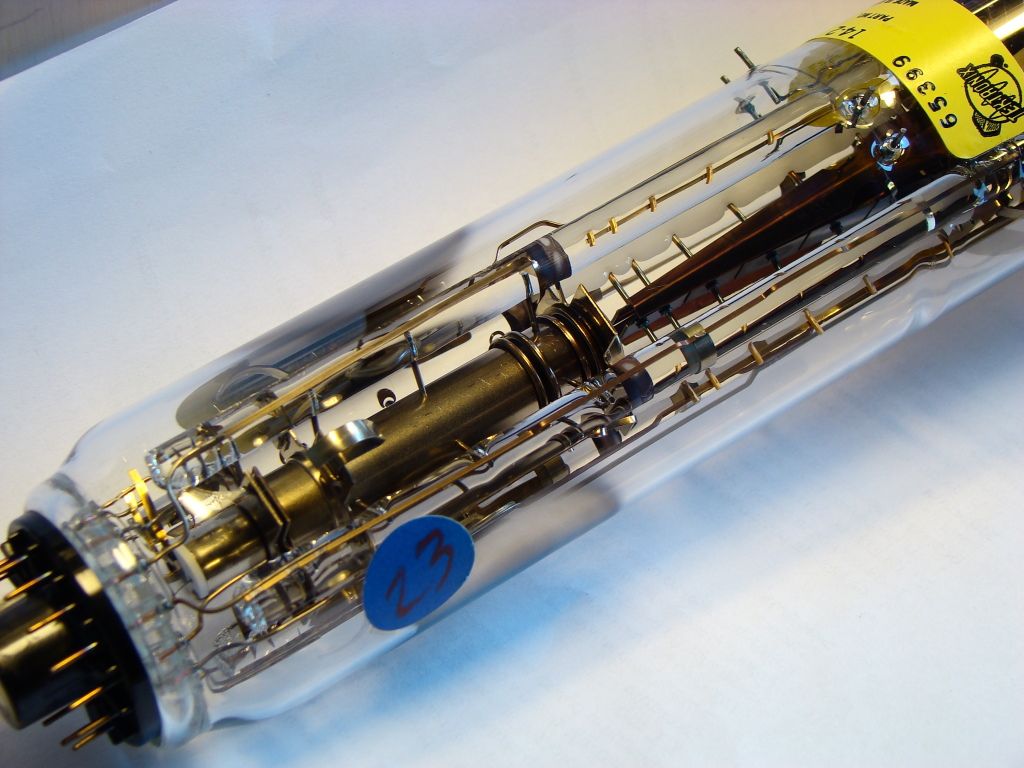
Comparison of two electron guns. Tektronix 7613 on the bottom and Hewlett Packard HP1741A on the top.
Looks like HP got away with not using segmented deflection plates. For some reason it looks like HP always made all-glass CRTs rather than the more rugged Tektronix glass ceramic type.

And the front of the gun assembly (HP1741A). The horizontal deflection plates and the two flood guns can be seen.
This should give an idea on how a storage CRT looks inside.
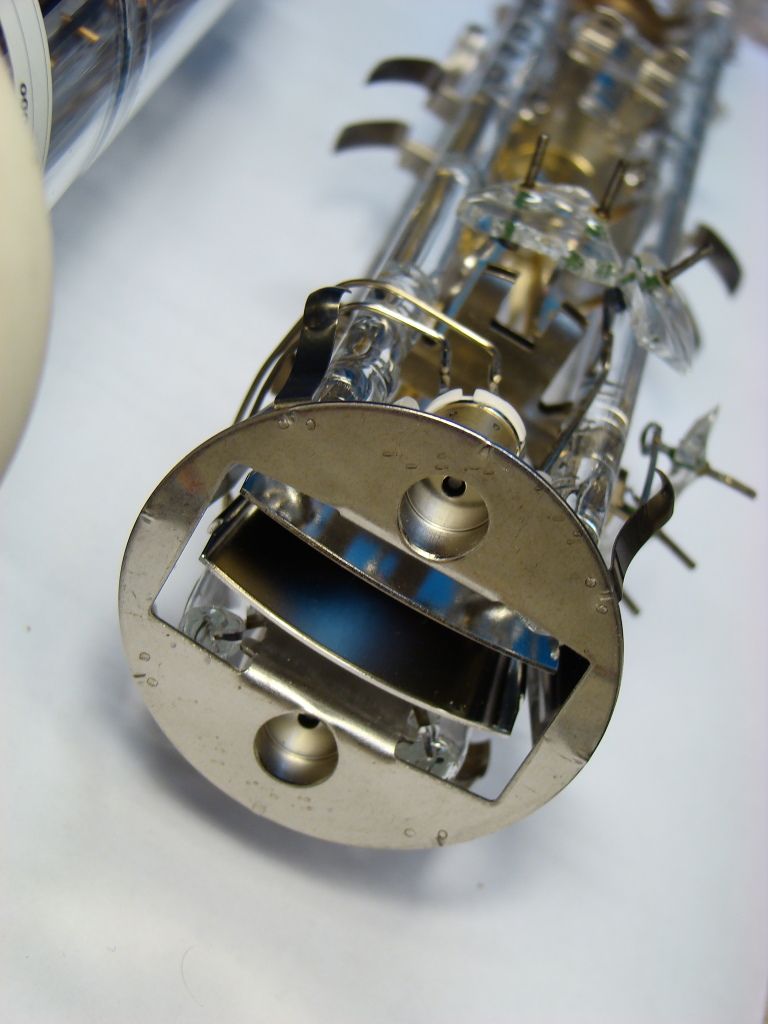
They look like the GH series from Positronics Connectors, (the outside collar is perhaps a custom addition to prevent pin damage and provide a secure connection!).
http://www.connectpositronic.com/products/51/CircleHex/
Thanks for that link. Yes, they may be just those connectors. Time to get out the calipers to measure them.